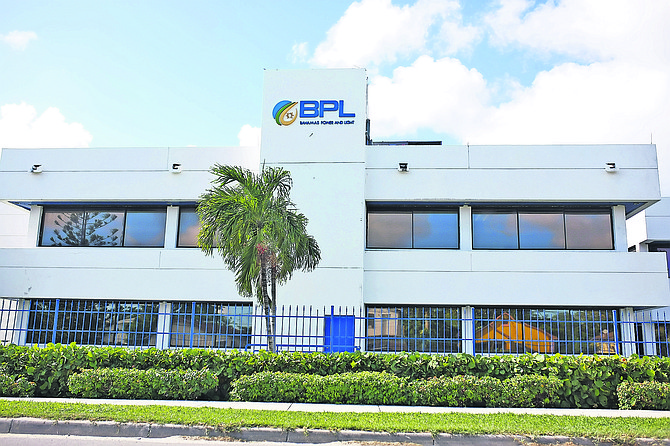By NEIL HARTNELL
Tribune Business Editor
nhartnell@tribu`nemedia.net
A Bahamas Power & Light (BPL) executive yesterday urged new developers to inform it of their energy needs as rapidly as possible given that it now takes three times’ as long to order key parts.
Toni Seymour, the state-owned utility’s chief operating officer, told the Long Island Business Outlook that ordering transformers and generators now lasts up to 18-24 months post-COVID compared to just six to eight weeks pre-pandemic.
“What I would encourage developers to do, once they have a build-out schedule and know what their actual load demand is, is please come in and see us and let us know so we have an idea of how long we have before we need to order new transformers, new generators,” she explained.
“I’ll give you an example. Post-COVID, while we could have gotten a primary transformer in six to eight months, that timeline is now 18-24 months. The update we got is 108 weeks for transformers. That gives you an idea of the kind of timelines we are working with when we have to go to the international market and order equipment to facilitate the kind of infrastructure needed for a 210-room hotel.”
Noting the multiple investments targeted at Long Island, including the $250m Calypso Cove cruise port, and Diamond Crystal Properties and Maritek Bahamas eco-tourism projects, Ms Seymour added that this could force BPL to relocate the island’s power station from the north as the centre of load demand will have shifted south should these developments come to fruition.
She said solar solutions, allied to battery energy storage (BESS), were now BPL’s first preference in meeting additional load demand. Revealing that it now costs BPL $1.5m for every additional Mega Watt (MW) of traditional generation demand that is added, Ms Seymour added that an extra 10-15 MW would likely be needed in Long Island if all three developments took off.
While utility-scale solar is presently more expensive to install, costing $2m for every additional MW, Ms Seymour said “the long-term benefits outweigh the upfront capital costs” through reducing BPL’s fuel demand.
Conceding that the utility is “cash-strapped”, BPL’s chief operating officer argued that it “may” need an increase in its base tariff rate to achieve sustainability. “This is a touchy topic,” she admitted. “When I raised it in Exuma everyone kind of gave me the side eye. BPL has not had a tariff increase since 2010. We all know the cost of doing business has increased significantly since then, and we are not exception...
“The Government has issued a Request for Proposal (RFP) for a tariff study that is currently ongoing. Nobody wants to hear about a rate increase, but in order for BPL to become a sustainable utility the base rate may have to increase. I did not say it will; it may have to increase for us to be able to afford the necessary upgrades that make us a sustainable and efficient utility.”
Ms Seymour spoke after Shevonn Cambridge, BPL’s chief executive, told last week’s Bahamas Institute of Chartered Accountants (BICA) conference that BPL has not had an increase to its base tariff since 2010, although it has seen a 100 percent increase in costs and up to 8 percent annual increase in demand over the past 13 years.
He said: “BPL has not had a tariff increase since 2010. In those 13 years, inputs have gone up exponentially. The costs of transformers, engines, wiring etc. All have seen nearly a 100 percent increase in costs. At the same time, output has also grown substantially as I’ve told you. We’ve seen about a 2 percent on average growth over that period, with last year seeing a six to 8 percent growth.
“So we’ve seen an increase in the cost of our inputs and an increase in demand on our output. At some point something has to give. Unfortunately, what tends to give in the absence of proper funding is the quality of service. We’re seeking not to have the quality of our service diminish, so we’re going to have to address that.”
Mr Cambridge explained that BPL’s current base tariff leaves the utility “vastly underfunded”, and confirmed that a study is being conducted to obtain recommendations on how to adjust the levy in a way that is a “win-win” for BPL and its stakeholders.
He said: “BPL’s tariff is the money we collect to fund our operation including capital development, maintenance and salaries. To be clear, the fuel and its associated costs, like transshipment to the Family Islands, is a direct pass through to our suppliers. BPL does not keep any of that money and there’s no profit or anything in it for BPL.
“The reality of it is that BPL’s current tariff leaves BPL vastly underfunded, and we’re looking to address that. Hopefully as the tariff study that’s currently being conducted comes to a completion, we will get some recommendations that we can do that in a way that is a win- win for all.”
Mr Cambridge added that an increase in BPL’s base tariff rate will allow the utility to improve its efficiency and will not increase electricity bills significantly. He said: “Basically, that type of study is taking a holistic look at BPL’s rates and its impact on all stakeholders, whether that be the Government, as a utility or you as a consumer.
“An increase in rates does not necessarily mean the customer bills would go up significantly. That increase will also allow us to fund many of the efficiency enhancement measures that we wish to undertake. And those efficiency enhancement measures we foresee allowing us to operate more efficiently.”





Comments
Use the comment form below to begin a discussion about this content.
Sign in to comment
Or login with:
OpenID